Did the Met Gala’s attendees live up to its Black dandy-inspired theme? UC Berkeley experts discuss
Professors Leigh Raiford and Zamansele Nsele, experts on Black art and visual culture, break down the event and its theme, “Superfine: Tailoring Black Style.”
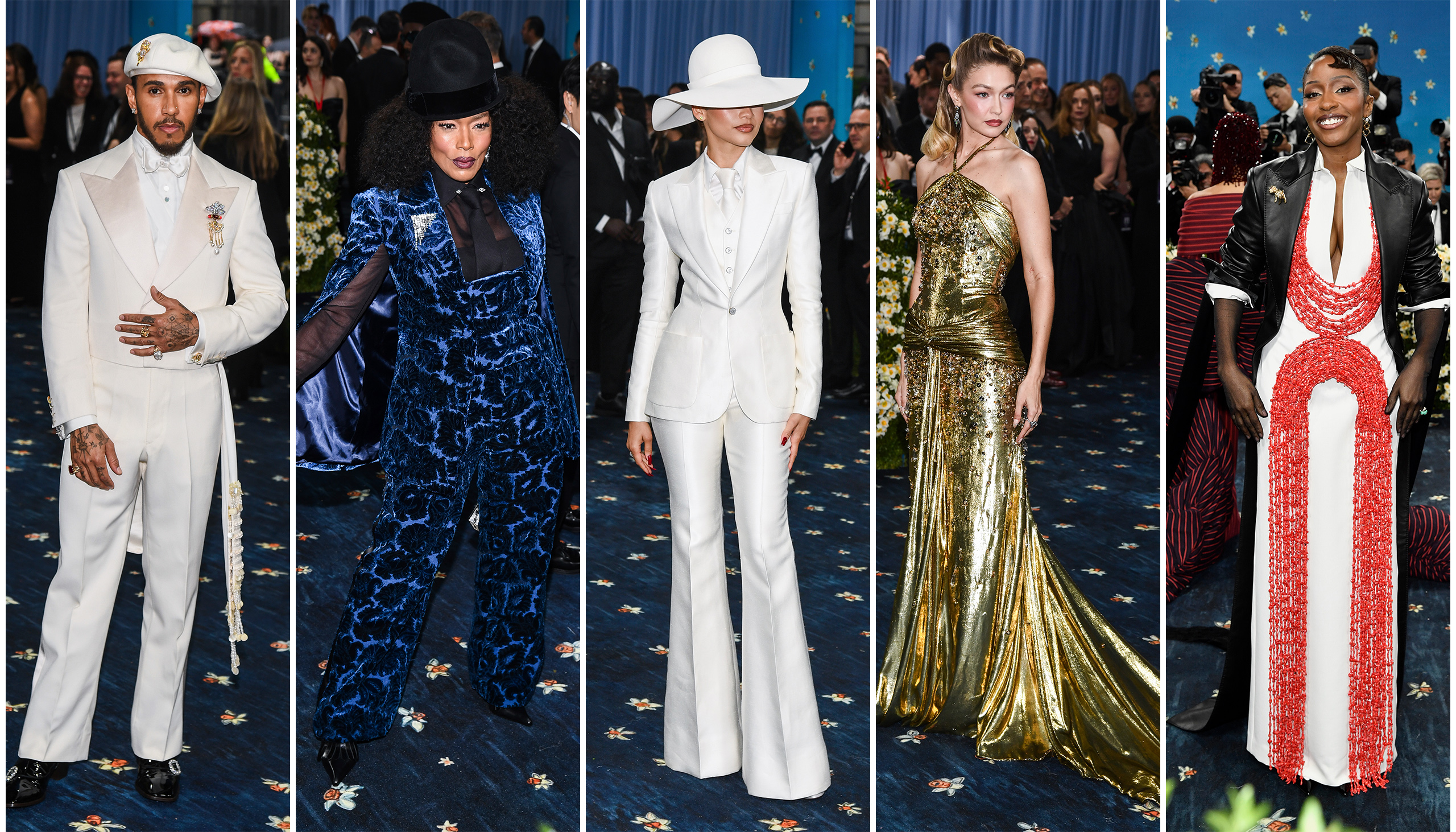
Lila Thulin/UC Berkeley (Source: Anthony Behar/Sipar USA/AP; Evan Agostini/Invision/AP)
May 6, 2025
Yesterday, the first Monday in May, marked a fashion holiday: the Met Gala. The theme of this year’s annual red carpet event, and the Metropolitan Museum of Art exhibition it celebrates, was “Superfine: Tailoring Black Style.” Inspired by Barnard College Africana Studies Professor (and exhibit guest curator) Monica L. Miller’s book Slaves to Fashion: Black Dandyism and the Styling of Black Diasporic Identity, the exhibition honors the flair and meticulously composed looks of the “dandy,” an archetype that originated in the 18th century. The writer Oscar Wilde, for instance, exemplifies this type of carefully attired man.
The first Black dandies were enslaved people whose fancy clothes served to signal their owner’s wealth, instead of their own personhood. But the idea was seized on soon after by Black men to express and negotiate their social status, self-determination and creativity. Items on display at the Met include Frederick Douglass’ tailcoat, suiting that belonged to the late Vogue magazine editor André Leon Talley and a shirt of Prince’s.
To consider this year’s theme and parse how attendees paid tribute to Black dandyism, UC Berkeley News turned to the expertise of Leigh Raiford, a professor in the Department of African American Studies and African Diaspora Studies who is an expert on Black visual culture, and Zamansele Nsele, an assistant professor in the Department of History of Art who studies contemporary Black art. The academics weighed in on the event and this year’s fashion via email.
Berkeley News: What are your thoughts on this year’s Met Gala theme?
Leigh Raiford: It is at once long overdue — the institution has largely excluded Black culture in the past — and a profound distraction. It doesn’t take a Ph.D. to know that Black style has fundamentally shaped global culture since the advent of the transatlantic slave trade. Examples abound, from the creation of the bustle to mimic Saartje Bartmann‘s steatopygia — large butt — in the early 19th century to zoot suits worn by both Black and Latinx communities in the mid-20th century to the transformation of global style brought on by hip-hop. This year’s gala and exhibition bring attention to the ways style has functioned as a tool of domination (think here of enslaved Africans being “dandified” in livery uniforms) and also as a site of resistance and a form of Black self-fashioning.
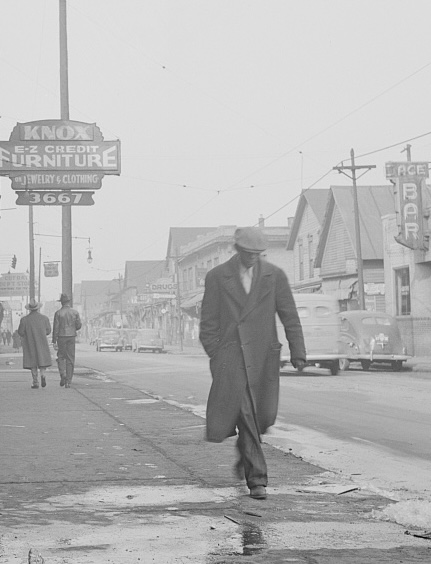
Library of Congress, Prints & Photographs Division, Farm Security Administration/Office of War Information Black-and-White Negatives
That said, I generally find the excess of the Met Gala and its tendency toward the apolitical to be in poor taste. While the world burns (and floods), while we witness hunger, genocide, extreme wealth disparity and continued exploitation of workers, we are supposed to ooh and ahh over celebrities paying $75,000 a ticket to be seen on a global platform yet remain largely silent. We have to ask, what is the price of inclusion, especially for Black people? I would have liked for there to be moments of “speaking truth to power” on the red carpet, if attendees could have both celebrated Black achievement in the realm of fashion and style and spoke plainly against the rising fascism that wishes to erase the history and cultures that make this exhibition possible — Black, working class, queer, trans.
What do you wish the casual Met Gala viewer understood about Black dandyism?
Raiford: Black dandyism is a manifestation of Black creativity, of profound innovation in the face of exclusion and often incredibly limited resources. Black dandyism isn’t defined by a personal stylist and an army of exploited sweatshop laborers. Rather, it’s about what has often defined the best of Black culture: adorning and valuing one’s Black being in an anti-Black world, and making beauty out of scraps.
What are some looks that you think succeeded in paying homage to Black dandyism?
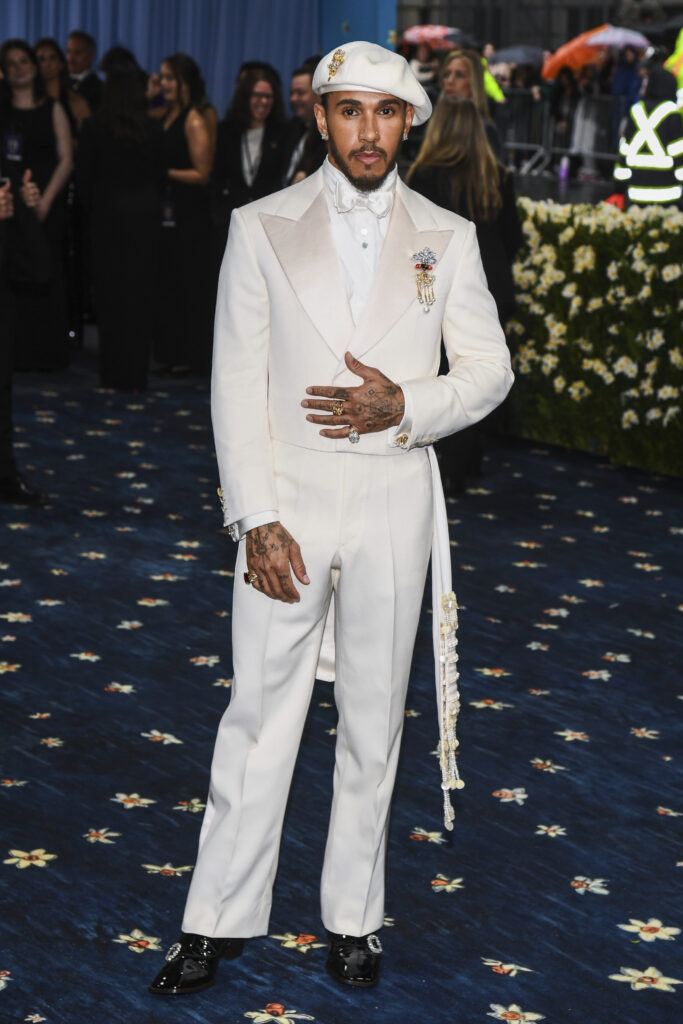
Anthony Behar/Sipa USA/AP
Zamansele Nsele: Co-chair Lewis Hamilton made a striking appearance in a Wales Bonner ivory tailcoat suit, a design that thoughtfully blended the sartorial heritage of the Harlem Renaissance, as personified by [bandleader and entertainer] Cab Calloway, with distinctive African pre-colonial spiritual embellishments. His jewelry emphasized this fusion, featuring a shimmering African baobab flower brooch containing garnets, his birthstone. A cowrie sash draped elegantly on the side of his pants evoked pre-colonial African currencies.
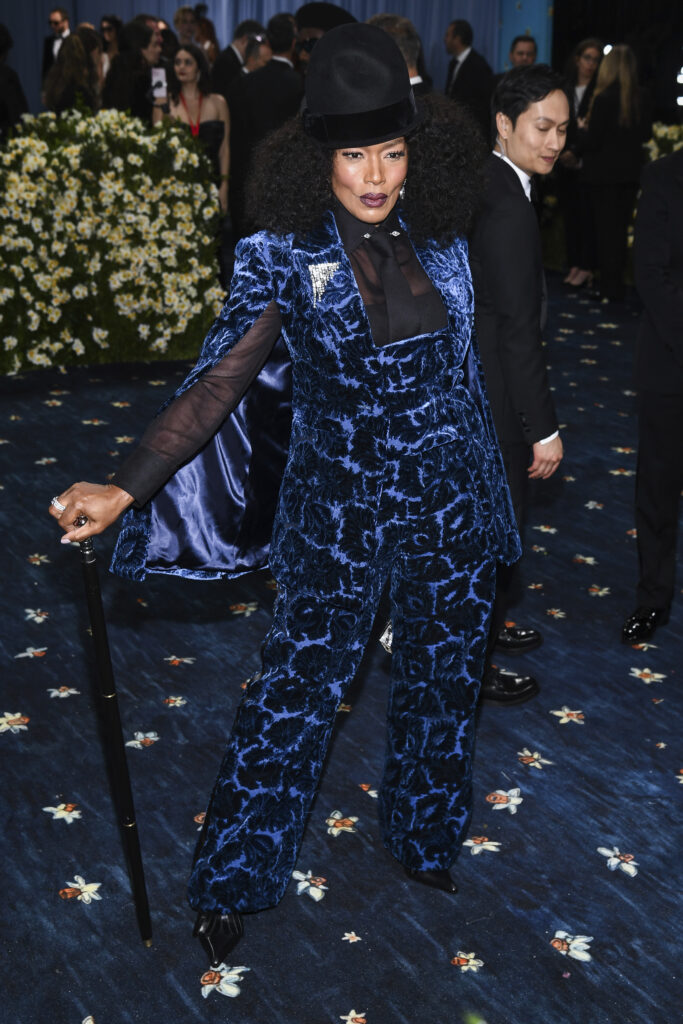
Anthony Behar/Sipa USA/AP
In her Met Gala debut, the iconic actress Angela Bassett embodied the swagger, flamboyance and signature style of Black dandies of the Democratic Republic of Congo, a sartorial movement known as “La Sape.” Bassett’s black and blue velvet tuxedo was completed by a bell-shaped hat and cane, a charismatic visual ode to this Congolese fashion subculture that began in the 1920s as a challenge to the superiority of colonial authorities. La Sape is an acronym of Société des Ambianceurs et des Personnes Élégantes, which translates to Society of Ambiance-Makers and Elegant People.
Raiford: The most basic understanding of the assignment would be to wear clothes made by Black designers, to uplift their work and vision, especially those designers working in their own brands and not in the legacy houses. So shout-outs to FKA Twigs and Tyler Mitchell in Wales Bonner; all the folks wearing Ozwald Boateng; Cole Escola in Christopher John Rogers; Regina King in Who Decides War; Lala Anthony in archival Virgil Abloh (pre-Louis Vuitton); and (weirdly, surprisingly) Kendall Jenner in Torishéju.
One way to think about dandyism is how clothes adorn especially the most marginalized and overlooked in society, telling a story about power, personality and poise. I keep coming back to Ayo Edebiri’s collaboration with Maximilian Davis, the Black, British creative director of Ferragamo, which featured a sleek white dress adorned with coral beads. It referenced the elegance, royalty and beauty of Nigerian Edo attire and included a black leather topcoat inspired by her own father.
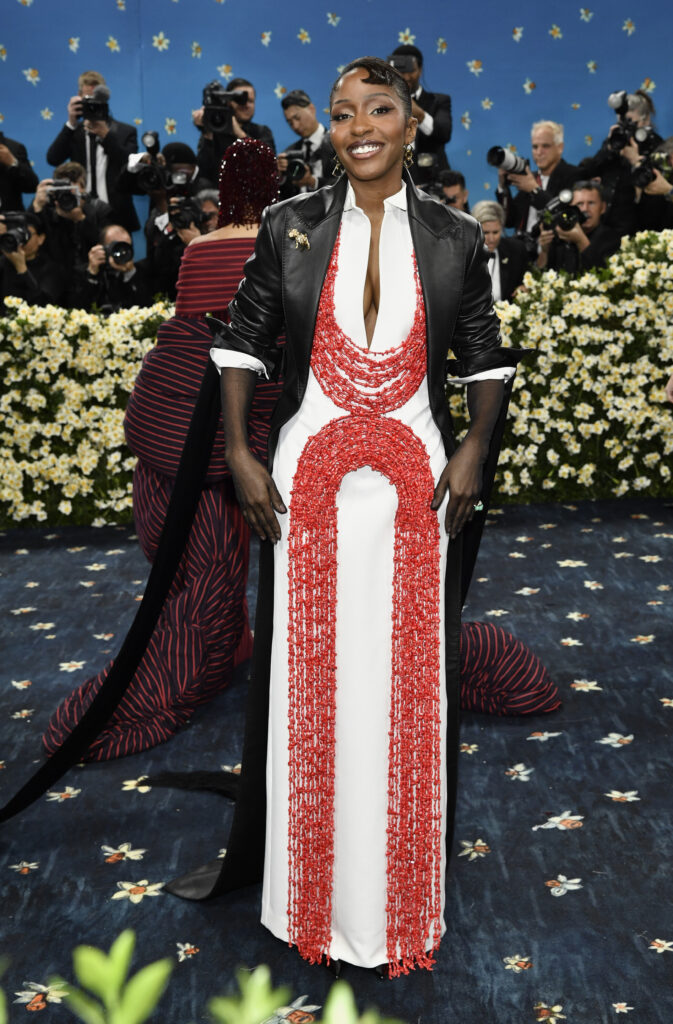
Evan Agostini/Invision/AP
Gigi Hadid’s collaboration with Miu Miu recreated a beaded gold gown inspired by one worn by the African American actress, dancer, singer and humanitarian Josephine Baker in 1951. The dress, Hadid shared, also paid tribute to Baker’s dress designer, Zelda Wynn Valdes, a Black woman who was trained by her uncle and opened up her own tailoring shop in the Washington Heights section of Manhattan.
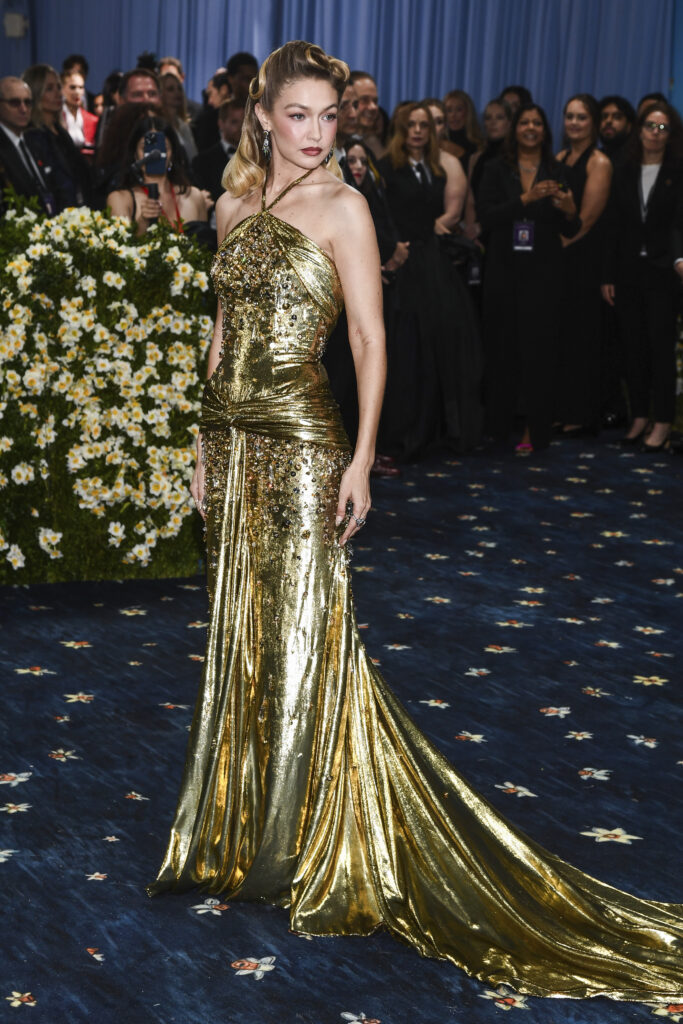
Anthony Behar/Sipa USA/AP
Though not strictly masculine fashion, I appreciate that both [Hadid and Edebiri’s] looks are homages to Black artisans and icons that value other aesthetic traditions beyond white or Western canons and celebrate everyday acts of Black self-fashioning.
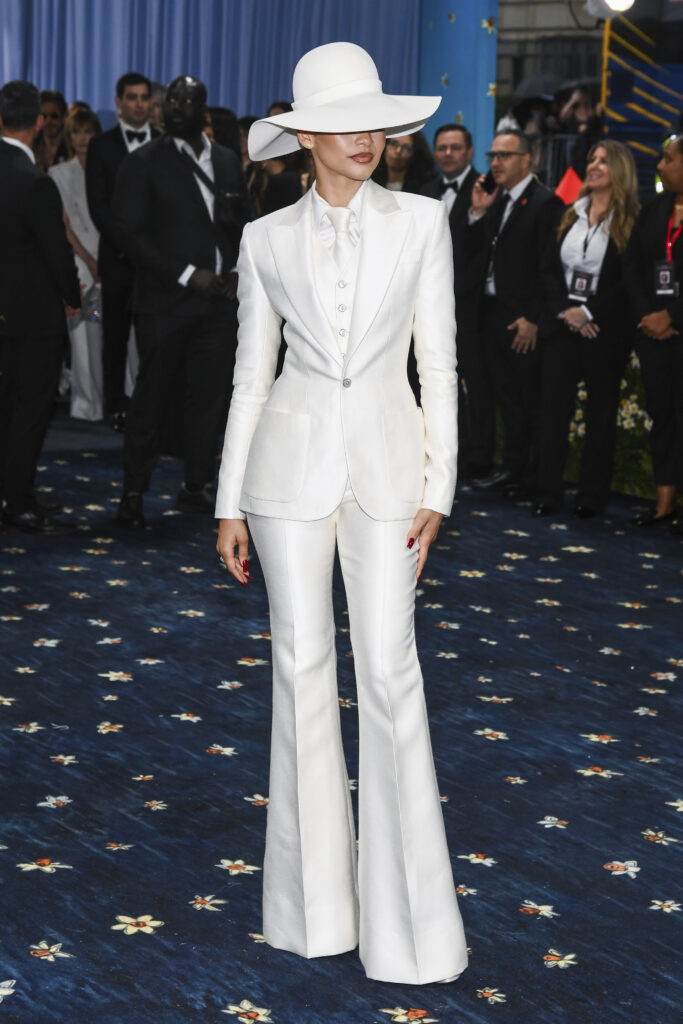
Anthony Behar/Sipa USA/AP
Zendaya (hometown hero) always serves, and her crisply tailored white suit and hat were no exception. What I loved about this look is that it was a [Black postmodern artist] Barkley Hendricks painting come to life, reminding us of the interplay between art and fashion.